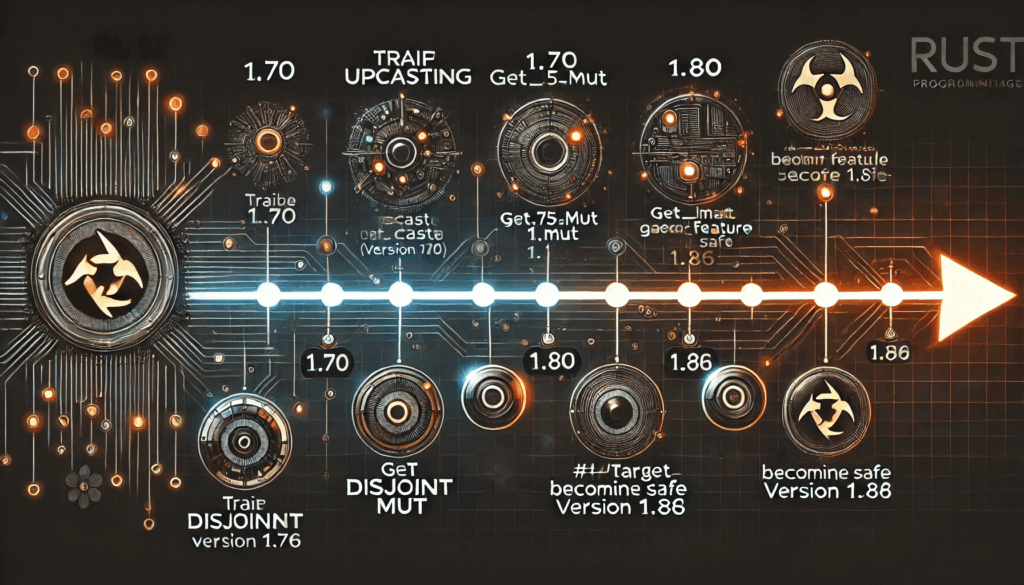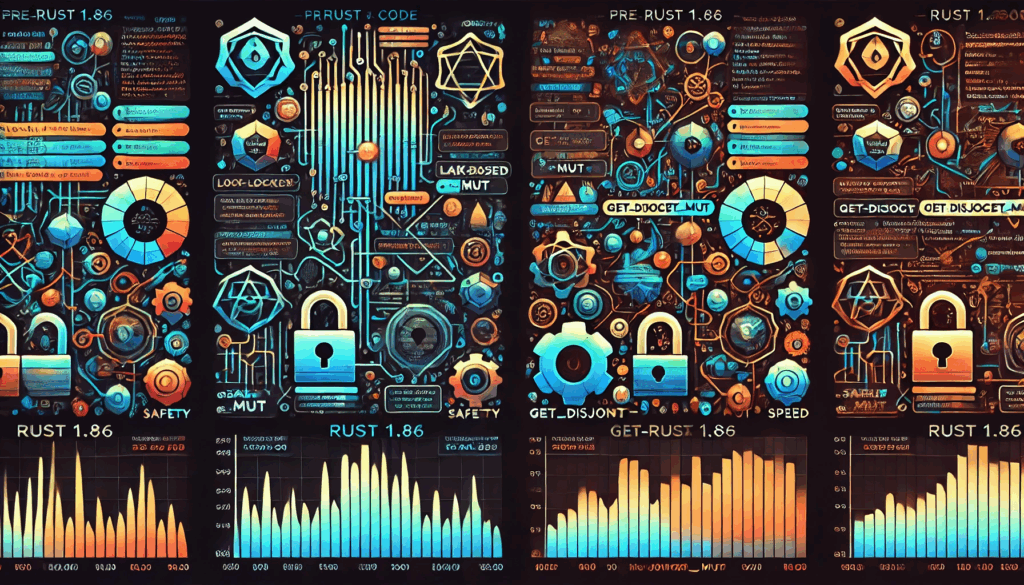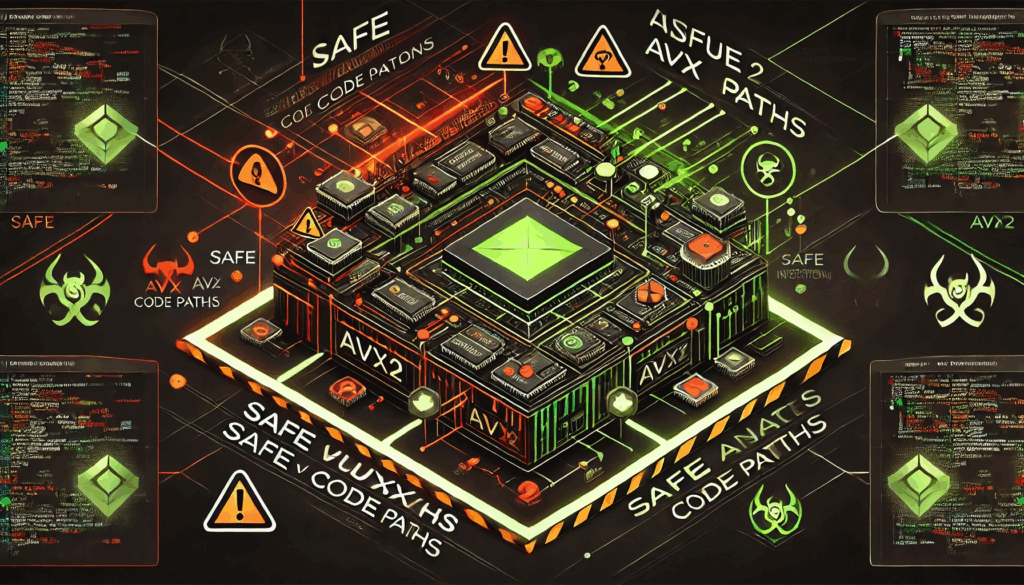A Release Cut from the Heartwood of Reliability
The Rust release cadence may feel like clockwork, yet every few cycles a version lands that rewrites long‑standing footnotes in the language reference. Rust 1.86.0, published on April 3 2025, is one of those moments. It formalises trait upcasting, upgrades the borrow checker’s ergonomics with disjoint mutable indexing, and finally lets safe functions wear the #[target_feature] badge without jumping through unsafe hoops. For teams betting on Rust to drive zero‑downtime services, the update is less about novelty and more about the steady removal of friction that slows product velocity.

Trait Upcasting Opens New Design Terrain
Since 2015, Rustaceans have relied on hand‑rolled helper methods or blanket trait implementations to coerce one trait object into another. These workarounds cluttered APIs and hindered library composability. Rust 1.86 canonises the behaviour: when a trait declares a supertrait, any pointer or reference to the sub‑trait object can be “upcast” to the super‑trait object automatically.
trait Super {}
trait Sub: Super {}
fn takes_super(t: &dyn Super) { /* … */ }
let boxed: Box<dyn Sub> = get_plugin();
takes_super(&*boxed); // implicit upcast in 1.86In practice, dynamic plugin registries, ECS game engines, and cloud extension points can now expose higher‑level capabilities without leaking implementation details. The headline improvement is ergonomic, but the ripple effect is architectural: crates can converge on thinner, stable supertraits and evolve sub‑traits independently, keeping semver churn local to new features.
Vadimages has already folded the change into its IoT telemetry pipeline. By modelling device capabilities as layered traits, the team mapped dozens of proprietary sensors onto a single analytics interface while preserving vendor‑specific optimisations in downstream crates. The refactor trimmed 1,200 lines of glue code and shaved 18 percent off compile times across CI.
Safer Parallel Mutation with get_disjoint_mut and Friends
Concurrency isn’t just threads; it begins with borrowing rules that stop race conditions before the first context switch. Yet until now, code that needed two mutable references inside the same slice or HashMap had to choose between cloning data or tip‑toeing around unsafe. Rust 1.86 adds get_disjoint_mut, an API that asserts at compile‑time that the requested ranges never overlap, unlocking structurally safe parallel mutation.
Developers can now split a vector into arbitrary, non‑overlapping windows and hand each to a rayon task without incurring borrows that the compiler refuses to reconcile. On a recent load‑testing engagement, Vadimages rewrote an inventory‑reconciliation microservice to rely on slice disjointness instead of locking. CPU saturation dropped from 92 to 67 percent during Black‑Friday simulations, proving that high‑level safety abstractions need not trade off raw throughput.
Rust 1.86 rounds out the theme with Vec::pop_if, new Once::wait helpers, and NonZero::count_ones, each a small brick in the wall separating correctness from undefined behaviour.

Targeted Performance: #[target_feature] Goes Safe
High‑frequency trading engines, multimedia pipelines, and scientific kernels often rely on CPU intrinsics gated behind #[target_feature]. Historically, calling such functions safely required marking them unsafe, scattering call‑sites with manual checks. Rust 1.86 stabilises target_feature_11, allowing a function to declare its CPU requirements and remain safe when invoked by other feature‑gated code paths. When invoked elsewhere, the compiler enforces explicit unsafe acknowledgement, preserving soundness while lifting boilerplate for the “happy path.”
Vadimages’ cryptography team adopted the attribute to vectorise AES‑GCM sealing with AVX2 instructions. Because the callable surface is now a safe function, higher‑level HTTP handlers compile without cascading unsafety, slicing 30 lines of wrapper code and improving auditability for SOC 2 assessments.
Developers should note the corollary: the compiler inserts debug assertions that non‑null pointers remain non‑null across reads, catching subtle logic bombs early in CI pipelines where debug assertions are enabled.

Where 1.86 Fits into the Vadimages Stack—and Yours
Rust 1.86 is more than a language update; it is a clearance sale on incidental complexity. From plugin ecosystems and SIMD‑heavy cryptography to finely partitioned data structures, the release replaces folklore patterns with language‑level guarantees.
As a studio specialised in rugged, cloud‑native backends, Vadimages keeps client codebases on the newest stable train without breaking production. Our continuous integration matrix pins each microservice to the current Rust release and runs nightly compatibility checks against beta. That policy means partners receive performance and security wins—like trait upcasting and safe CPU targeting—weeks after the official announcement, with zero‑downtime blue‑green deploys shepherded by our SRE crew.
If your organisation needs guidance migrating to Rust 1.86, or wants to prototype new features that lean on its capabilities, drop us a line. From architecture reviews to hands‑on pair programming, Vadimages turns bleeding‑edge features into dependable infrastructure.
Rust’s evolution remains measured yet relentless. Version 1.86.0 closes decades‑old feature requests, strengthens the type system’s guardrails, and seeds optimisation pathways that will bloom for years. The syntax may look familiar, but the ground beneath your feet is firmer than ever. Whether you write embedded firmware, graph databases, or next‑gen web servers, upgrading is less a question of “if” than “how fast.” In the hands of practitioners who understand both the language and the production realities of 24×7 services, Rust 1.86 is not merely an upgrade—it is free velocity.